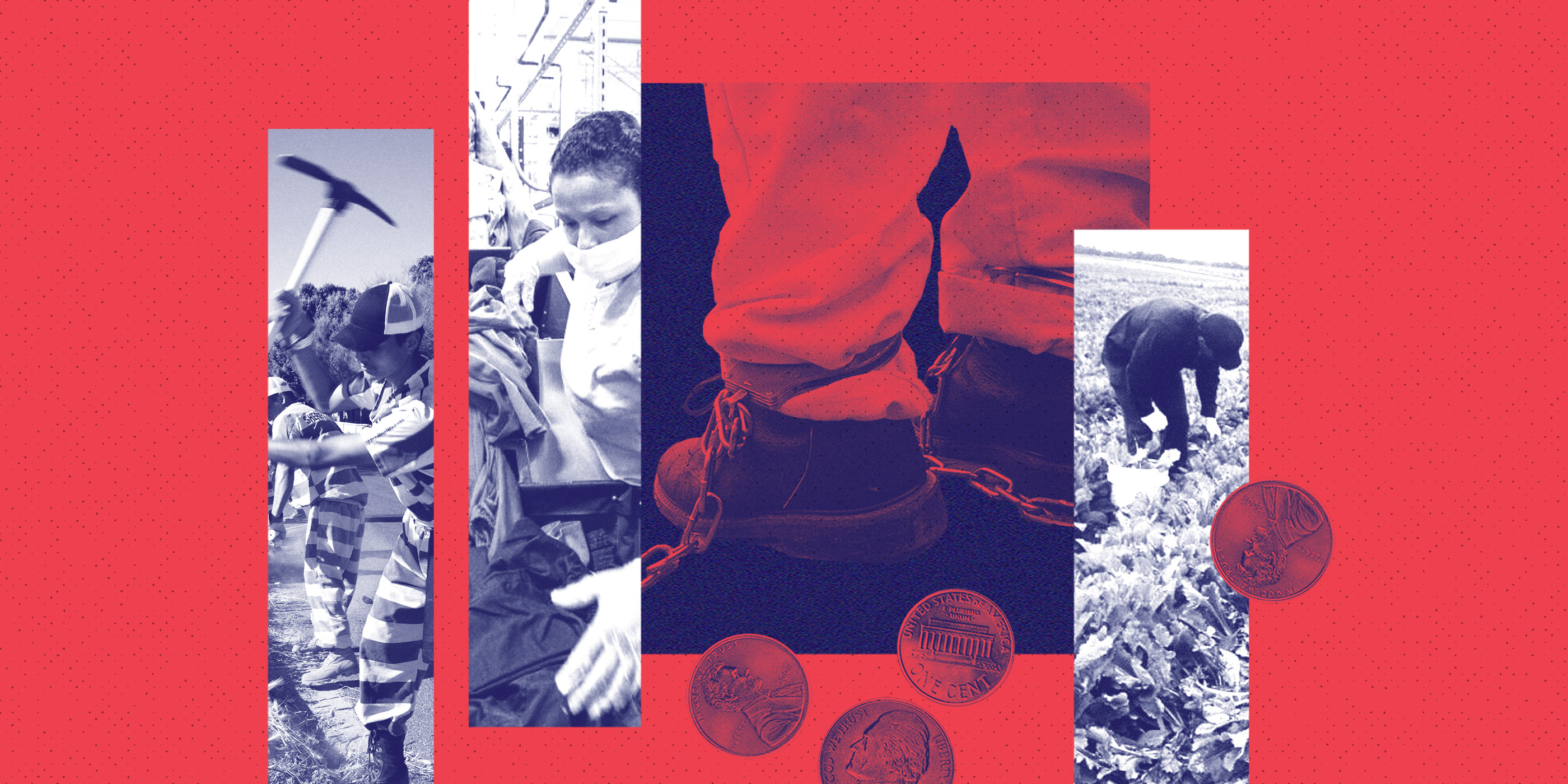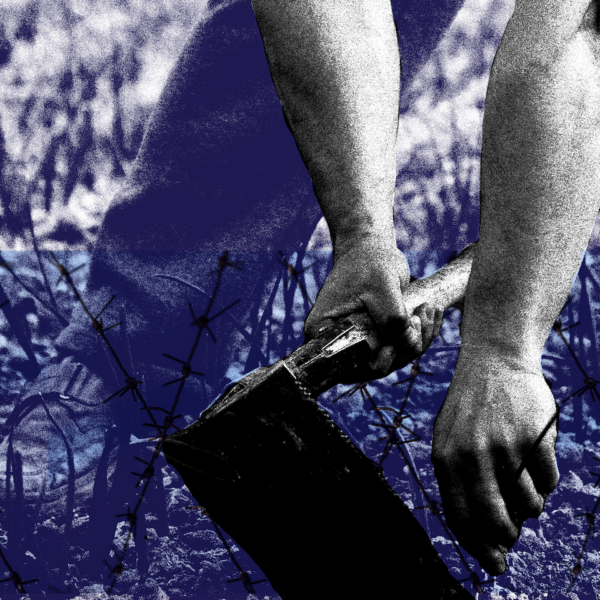Captive Labor: Stories of Involuntary Servitude


It has been 157 years since the 13th Amendment abolished slavery, yet hundreds of thousands of people are still living in involuntary servitude — legally — due to loopholes in the law allowing states to extract free labor from prisons instead. Today, over 65 percent of incarcerated people report being forced to work in prison, doing jobs like firefighting and paving roads for little or no pay while governments and private companies generate billions of dollars each year from their labor.
In partnership with the University of Chicago, the ACLU conducted a study of prison labor nationwide in a new report, “Captive Labor: Exploitation of Incarcerated Workers.”

Captive Labor: Exploitation of Incarcerated Workers
Source: American Civil Liberties Union
Using open records requests, analysis of state and federal laws, and extensive interviews, the report documents the realities of prison labor and outlines steps lawmakers can take to protect the rights of the roughly 800,000 incarcerated people working in prisons.
Prison labor is inherently coercive and exploitative. Incarcerated workers are not protected by standard labor laws, like minimum wages, overtime protection, the right to unionize, and workplace safety guarantees. Many workers are forced into hazardous jobs without standard training or protective gear, often under threat of punishment — such as solitary confinement, loss of family visitation, and denial of sentence reduction — if they do not comply with orders. Lives and livelihoods are completely at the mercy of the public and private entities exploiting a cheap and captive labor force.
The federal minimum wage is $7.25 per hour; in contrast, most prison jobs pay an average hourly rate of 13 to 52 cents. Deductions for taxes, court costs, and other fees can leave workers with even less. Seventy percent of laborers surveyed in the report said they could not afford basic necessities on their paltry wages. “You can barely afford laundry soap with that amount of pay,” said an incarcerated laborer in Illinois, who reported earning only $4.80 per month working as a porter. That’s one cent per hour. Some workers are not paid at all, including the majority in Alabama, Arkansas, Florida, Georgia, Mississippi, South Carolina, and Texas.
Prison jobs often come with substantial risks to workers’ health and safety due to lack of training, inadequate protective gear, and poor work conditions that fall far short of basic safety standards applied in all other workplaces. As a result, prison labor can result in preventable injuries and deaths. “I’ve seen a man get electrocuted by a faulty wiring,” said a woman incarcerated in Illinois, who then had to return to work the next day. “I am nothing but a number to the people I am working for.”
Working conditions have become even more dangerous due to the widespread failure to administer basic COVID-19 safety precautions and protocol in prisons, despite being hotbeds of infection. During the height of the pandemic, incarcerated workers were made to launder bed sheets from hospitals treating COVID-19 patients, transport bodies, and even dig graves — all while producing masks, hand sanitizer, and other personal protective equipment for people outside. Attempts to refuse working were met with threats to push back parole dates.
Many workers report discrimination in how jobs are assigned. “Any job outside the kitchen is given mostly to white inmates,” said Jesus, who is incarcerated in Illinois. An anonymous inmate at the same facility reported that “white inmates get the plumbing, electrician, and carpentry jobs,” which are higher-paying and help them acquire skills and experience to improve employment prospects upon release, while people of color get “none of the jobs that can actually train us to get a good job on the outside.” Such practices contribute to systemic inequities that disproportionately impact communities of color.
Despite innumerable risks and rights violations, prison labor continues to flourish because it is not only profitable, but part and parcel of the mass incarceration system. Incarcerated workers produce more than $2 billion a year in goods and over $9 billion a year in services for the maintenance of the prisons where they are warehoused, yet only 1 percent of state correctional budgets goes to their wages. Incarcerated workers’ labor offsets the staggering costs of our country’s bloated prison system, masking the true costs of mass incarceration.
Our new report outlines a number of measures that governments can take to improve prison labor conditions and protect the rights of incarcerated people. Recommendations include:
- Ensuring all prison labor is fully voluntary by eliminating laws and policies that punish people who are unable or unwilling to work.
- Guaranteeing the same standard labor protections available to other workers in the U.S., including minimum wages, overtime pay, health and safety standards, unionization, and anti-discrimination protections.
- Instituting comprehensive safety and training programs for all prison jobs.
- Investing in programs that provide incarcerated workers with marketable skills and training to help them find jobs after release.
- Providing speedy access to redress to workers whose rights have been violated.
- Eliminating licensing restrictions and other forms of discrimination against formerly incarcerated people in hiring and employment.
Voters can take action by urging lawmakers to amend state constitutions to eliminate provisions permitting slavery and involuntary servitude; and to amend federal labor-related legislation to explicitly include incarcerated workers under the definition of “employee.” As midterm elections approach, voters should research candidates’ stances on prison labor and mass incarceration, and push them to commit to reform.



